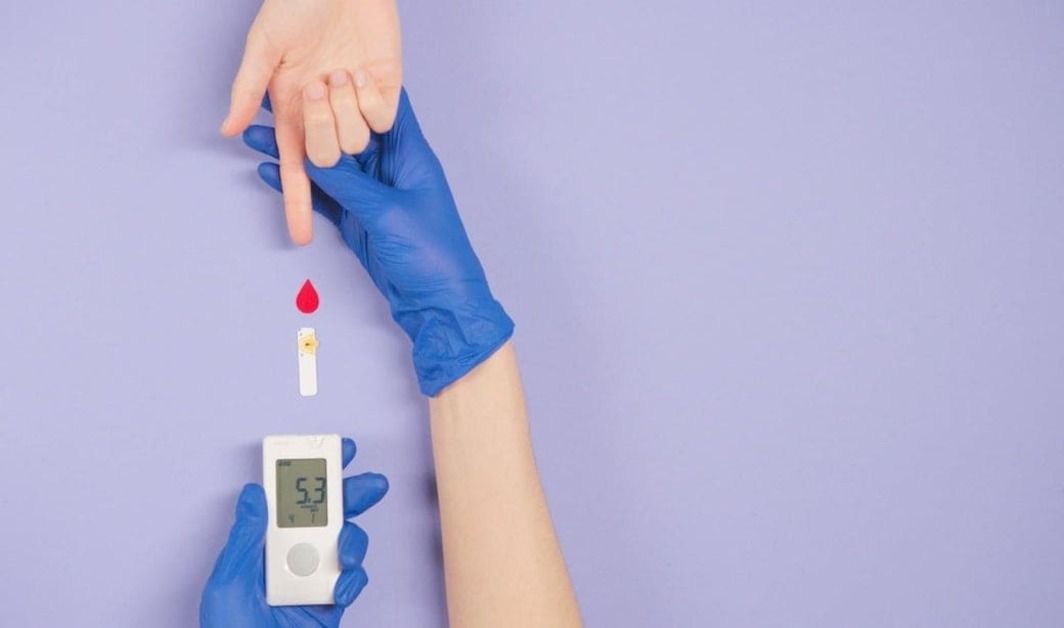Diabetes Management
Monsoon Safety: Essential Tips To Prevent Infection for Diabetics
2 min read
By Apollo 24|7, Published on - 03 September 2024
Share this article
0
0 like
.jpg?tr=q-80)
As the monsoon showers bring relief from the summer heat, they can also bring a host of infections, particularly for those managing type 2 diabetes. The combination of humidity, contaminated water, and fluctuating blood sugar levels can increase the risk of infection during this season. However, with some simple preventive measures, individuals with diabetes can safely navigate through the monsoons. Let us explore these measures in detail
Cultivating Good Hygiene Habits
Adopting good hygiene is the first line of defence against monsoon infections. It involves maintaining the cleanliness of self and immediate surroundings. Regular washing of hands and feet, keeping skin folds clean and dry, and wearing dry footwear can significantly reduce the risk of fungal and bacterial infections.
Regulating Blood Sugar Levels
Fluctuating blood sugar levels can make individuals with diabetes more susceptible to infections. Regular monitoring and adjustments to insulin doses or medication can help maintain blood sugar control. Physical activity also aids in managing blood sugar levels and should be incorporated into daily routines.
Battling Against Infections
During monsoons, consumption of untreated or contaminated water can lead to waterborne diseases. It's crucial to ensure that the water consumed is safe and clean, otherwise, it would lead to health issues that could cause complications with diabetes. Additionally, protection against mosquito-borne diseases is essential. Using mosquito repellents, wearing long-sleeved clothing, and utilising bed nets can aid in prevention. Keep your immunisations up-to-date, particularly monsoon related such as Pneumococcal, Influenza & RSV.
Maintaining Skin Health
Keeping the skin healthy is another vital aspect of preventing infections. Regular moisturising using non-greasy products helps prevent dryness and cracking, potential entry points for bacteria and fungi. Individuals with diabetes should also inspect their feet daily for any signs of damage or infection.
Incorporating these measures into one's lifestyle can considerably lower the risk of infections during monsoons for individuals with diabetes. The Apollo Super 6 programme offers comprehensive guidance for adopting a healthy lifestyle and managing diabetes effectively.
Diabetes Management
Consult Top Diabetologists
View AllLeave Comment
Recommended for you

Diabetes Management
Healthier Roti Alternatives for People with Diabetes
Discover healthier roti for diabetes management: Multigrain (jowar, bajra, ragi) is nutrient-rich and low-glycemic. Oats roti aids blood sugar with fiber and beta-glucans. Almond flour, flaxseed, and chickpea flour roti offer low-carb, high-fiber options. Embrace these for a varied, nutritious diet.

Diabetes Management
Diabetes Reversal: A Realistic Possibility
Diabetes reversal is a reality for many living with type 2 diabetes. Methods like bariatric surgery, low-calorie diets, and carbohydrate restriction have shown promising results. However, professional assistance is often crucial to maintaining these drastic lifestyle changes. Here's where the Apollo Super6 programme can lend a helping hand, guiding you towards a healthier life.

Diabetes Management
Why is it Important to Maintain Blood Sugar within Range?
A blood sugar level of 98 mg/dL falls within the normal range, signifying effective glucose regulation and metabolic stability. Regular monitoring and healthcare provider consultation offer a comprehensive understanding of metabolic health. While a consistent reading of 98 mg/dL is generally positive, individual health factors should be considered for accurate assessment.
Subscribe
Sign up for our free Health Library Daily Newsletter
Get doctor-approved health tips, news, and more.
Visual Stories

8 Fruits That are Incredibly Healthy for Diabetes
Tap to continue exploring
Recommended for you

Diabetes Management
Healthier Roti Alternatives for People with Diabetes
Discover healthier roti for diabetes management: Multigrain (jowar, bajra, ragi) is nutrient-rich and low-glycemic. Oats roti aids blood sugar with fiber and beta-glucans. Almond flour, flaxseed, and chickpea flour roti offer low-carb, high-fiber options. Embrace these for a varied, nutritious diet.

Diabetes Management
Diabetes Reversal: A Realistic Possibility
Diabetes reversal is a reality for many living with type 2 diabetes. Methods like bariatric surgery, low-calorie diets, and carbohydrate restriction have shown promising results. However, professional assistance is often crucial to maintaining these drastic lifestyle changes. Here's where the Apollo Super6 programme can lend a helping hand, guiding you towards a healthier life.

Diabetes Management
Why is it Important to Maintain Blood Sugar within Range?
A blood sugar level of 98 mg/dL falls within the normal range, signifying effective glucose regulation and metabolic stability. Regular monitoring and healthcare provider consultation offer a comprehensive understanding of metabolic health. While a consistent reading of 98 mg/dL is generally positive, individual health factors should be considered for accurate assessment.

